He studied drawing and modeling at the Ateliers de Saint-Maur des Fossés.
He was a sculptor playing with all techniques: working in bronze, terracotta, wood and stone. He created medals and jewelry, as well as paintings in various forms: pastels, gouaches, etc.
He represented dogs (over 120 species), horses, cats and farmyard animals in plaster, bronze and terracotta.
Richard Fath died on November 17, 1952.
Fath, sculptor from father to son
Far from salons and exhibitions, Richard Fath worked in the shadows, indifferent to schools and fashions, on the bangs of official trends. His uncommon artistic sensibility and frenetic creativity have given rise to a rich and varied body of work, whose only watchwords have been naturalness and emotion.
An extraordinary body of work
“My father had only one reference: naturalness”.
Richard Fath le Jeune stands in front of a strikingly realistic and emotional terracotta of a bulldog in his father's studio, where he is now working to revive his work. He takes a long look at the animal's profile and smiles at us, full of pride. Richard Fath's work remains little-known because it is that of an animal artist, and “animal artists” have always been victims of the modesty of their subject matter. Worldly circles have marginalized them, making them the poor relations of the family of visual artists - “something like the veterinarian in the army of doctors”, explained art critic Louis Vauxelles in 1932.
His work is also little-known, due to his personality and his convictions as an artist, who stubbornly stayed off the beaten track, away from schools and salons. “I wasn't made to live in this century”, he once confided to his son, even though he wasn't in the habit of expressing his feelings. There's no need to look for “periods” in his work, as other creators do: “Dad would see a dog, a cat, a bird, his son would draw them, without thinking, because it gave him pleasure - he lived outside his time”.
Frantic creativity
Born in Paris in March 1900, Richard Fath made his artistic debut in 1923 and his first dog portraits in 1926. From then on, his output of animals grew steadily. What he did not express in his life as a man, having always shown himself to be reserved and somewhat wild, he expressed in abundance in his work, as if in compensation. From 1925 to 1952, he lived in his studio in Bagneux sur Seine In his native Paris, he produced an impressive number of works, not only of animals. Many remained in the sketch stage; attempts he soon abandoned to move on and satisfy his inexhaustible curiosity for his models - starting with his own children: “We were his models everywhere and all the time,” jokes Richard the son. Luckily, Mom was there to tell him to leave us alone!
In the countryside, “even when we were out for a walk, he'd stop and draw”. Very spontaneous, he was able to work anywhere, even in the kitchen, on a corner of the table, forgetting to eat so absorbed was he in his thoughts, and often being “caught by Mom saying, 'Leave your pencil and paper alone!
Technically, Richard Fath touched on a bit of everything: “It doesn't matter the means, it's the goal that counts”, he taught his son and pupil. Pencil drawing, pastel, charcoal, painting, sculpture on clay, plaster, wood, stone, wax, steel, pewter, ivory... Drawings, sculptures, medals and engravings. Few large-scale works, rather “goldsmithing”, including these astonishing steels cut directly into tiny dog heads. His priority was conscientious learning of the art. Be a good craftsman,” he repeated. If you must have genius, don't worry about it! Do what you love, and just try to get there. And Richard-Camille, son and pupil, learned his lesson well. “My father set out in the joy of making something. He was against declared genius”...
A passion for animals and respect for the model
Simplicity was a watchword, almost a necessity. My father had a great sense of observation,” says his son. He was a great animal painter who tried to render animals as faithfully as possible. He would set off to draw cattle and horses in the fields, the countryside and the surrounding countryside. He also spent long hours with felines in zoos and menageries. As for dogs, “he was surrounded by them from his earliest childhood, and would go and observe them at dog shows”. A kind of “friendship” bound him to his models, whom he familiarized and calmed. Richard-Camille insists on this “understanding of the animal”, this “communion with the model”, this “empathy” that gave his father a particular eye for animals, making him faithfully respect what he saw: “For many artists, art is the interpretation of nature. For my father, art was more about being faithful to nature”. Loyal to nature like a dog to its master, out of love. Emotion and “sensation
The search for the “natural”, “sensation” and “emotion” are the keys to all Fath's work, which they weave like a discreet, intractable weft. “I see an animal, I feel a sensation, I try to reproduce it”, he used to say to his son. Richard Fath aimed for the simple and the beautiful, which led him to prefer the abstract of a Pompon or a Brancusi, or the “savagery” of a Barry, to tender, “gentle” scenes, animals with attractive physiques: “Dad didn't do snakes, spiders or rhinoceroses, even though he was very prolific. He didn't go for scenes of violence or animal virility. He preferred doe and fawn to stag; sensuality, femininity. He loved it, it was his pleasure”. A “smiling plenitude” replaced “catastrophe, disaster, horror”.
Studying dogs
It was around 1928 that Richard Fath turned his attention to the canine world, developing his production of publishing bronzes. Little by little, he found patrons in the animal clubs. Word of mouth” was all it took to increase his clientele. The same love of dogs, the same “shared demand for truth” brought him into contact with dog clubs and societies, in particular with the Société Centrale Canine, whose president would say of his work that it “marked an era”.
I spent ten hours a day working with him, and we spent a lot of time in museums, observing and drawing”.
It's not surprising, then, to hear him say, with restrained emotion and a changed voice, brought back from childhood: “I lost my dad and my teacher at the same time. When he died, I was twenty-two, and it changed my whole life. I lost my bearings, and stopped everything for a long time. Dad's death left a tremendous void”...
“Bringing Dad back to life
Since then, the son has only one fear: to see his father “fall into oblivion”. And a single goal: “to bring Dad back to life”. If the goal is simple, achieving it seems more complicated. So he tirelessly scoured galleries, museums and auction rooms to get his father in. His greatest triumph is the “thousand to two thousand dogs placed in museums in France and Europe”. Of course, the road is strewn with obstacles and a few “polite slaps in the face”, as he smilingly points out. Nevertheless, the goal has been achieved:
“I'm an old man, but I think I'm succeeding: when we're all dead, Dad will go down as one of the great animal sculptors of the 20th century”...
There's no doubt that the father up there can hear his son. His son is constantly talking to him, involving him in our conversation
I spent ten hours a day working with him, and we spent a lot of time in museums, observing and drawing”.
It's not surprising, then, to hear him say, with restrained emotion and a changed voice, brought back from childhood: “I lost my dad and my teacher at the same time. When he died, I was twenty-two, and it changed my whole life. I lost my bearings, and stopped everything for a long time. Dad's death left a tremendous void”...
“Bringing Dad back to life
Since then, the son has only one fear: to see his father “fall into oblivion”. And a single goal: “to bring Dad back to life”. If the goal is simple, achieving it seems more complicated. So he tirelessly scoured galleries, museums and auction rooms to get his father in. His greatest triumph is the “thousand to two thousand dogs placed in museums in France and Europe”. Of course, the road is strewn with obstacles and a few “polite slaps in the face”, as he smilingly points out. Nevertheless, the goal has been achieved:
“I'm an old man, but I think I'm succeeding: when we're all dead, Dad will go down as one of the great animal sculptors of the 20th century”...
I spent ten hours a day working with him, and we spent a lot of time in museums, observing and drawing”.
It's not surprising, then, to hear him say, with restrained emotion and a changed voice, brought back from childhood: “I lost my dad and my teacher at the same time. When he died, I was twenty-two, and it changed my whole life. I lost my bearings, and stopped everything for a long time. Dad's death left a tremendous void”...
“Bringing Dad back to life
Since then, the son has only one fear: to see his father “fall into oblivion”. And a single goal: “to bring Dad back to life”. If the goal is simple, achieving it seems more complicated. So he tirelessly scoured galleries, museums and auction rooms to get his father in. His greatest triumph is the “thousand to two thousand dogs placed in museums in France and Europe”. Of course, the road is strewn with obstacles and a few “polite slaps in the face”, as he smilingly points out. Nevertheless, the goal has been achieved:
“I'm an old man, but I think I'm succeeding: when we're all dead, Dad will go down as one of the great animal sculptors of the 20th century”...
I spent ten hours a day working with him, and we spent a lot of time in museums, observing and drawing”.
It's not surprising, then, to hear him say, with restrained emotion and a changed voice, brought back from childhood: “I lost my dad and my teacher at the same time. When he died, I was twenty-two, and it changed my whole life. I lost my bearings, and stopped everything for a long time. Dad's death left a tremendous void”...
“Bringing Dad back to life
Since then, the son has only one fear: to see his father “fall into oblivion”. And a single goal: “to bring Dad back to life”. If the goal is simple, achieving it seems more complicated. So he tirelessly scoured galleries, museums and auction rooms to get his father in. His greatest triumph is the “thousand to two thousand dogs placed in museums in France and Europe”. Of course, the road is strewn with obstacles and a few “polite slaps in the face”, as he smilingly points out. Nevertheless, the goal has been achieved:
“I'm an old man, but I think I'm succeeding: when we're all dead, Dad will go down as one of the great animal sculptors of the 20th century”...
I spent ten hours a day working with him, and we spent a lot of time in museums, observing and drawing”.
It's not surprising, then, to hear him say, with restrained emotion and a changed voice, brought back from childhood: “I lost my dad and my teacher at the same time. When he died, I was twenty-two, and it changed my whole life. I lost my bearings, and stopped everything for a long time. Dad's death left a tremendous void”...
“Bringing Dad back to life
Since then, the son has only one fear: to see his father “fall into oblivion”. And a single goal: “to bring Dad back to life”. If the goal is simple, achieving it seems more complicated. So he tirelessly scoured galleries, museums and auction rooms to get his father in. His greatest triumph is the “thousand to two thousand dogs placed in museums in France and Europe”. Of course, the road is strewn with obstacles and a few “polite slaps in the face”, as he smilingly points out. Nevertheless, the goal has been achieved:
“I'm an old man, but I think I'm succeeding: when we're all dead, Dad will go down as one of the great animal sculptors of the 20th century”...
No doubt the father, up there, hears his son. His son is constantly talking to him, involving him in our conversation.He is already reborn here, within the four walls of the studio, and we can almost feel his breath, a discreet ghost, a mute presence, an attentive third man...
Julie Delfour
Revue de la Cynophilie, October 2003







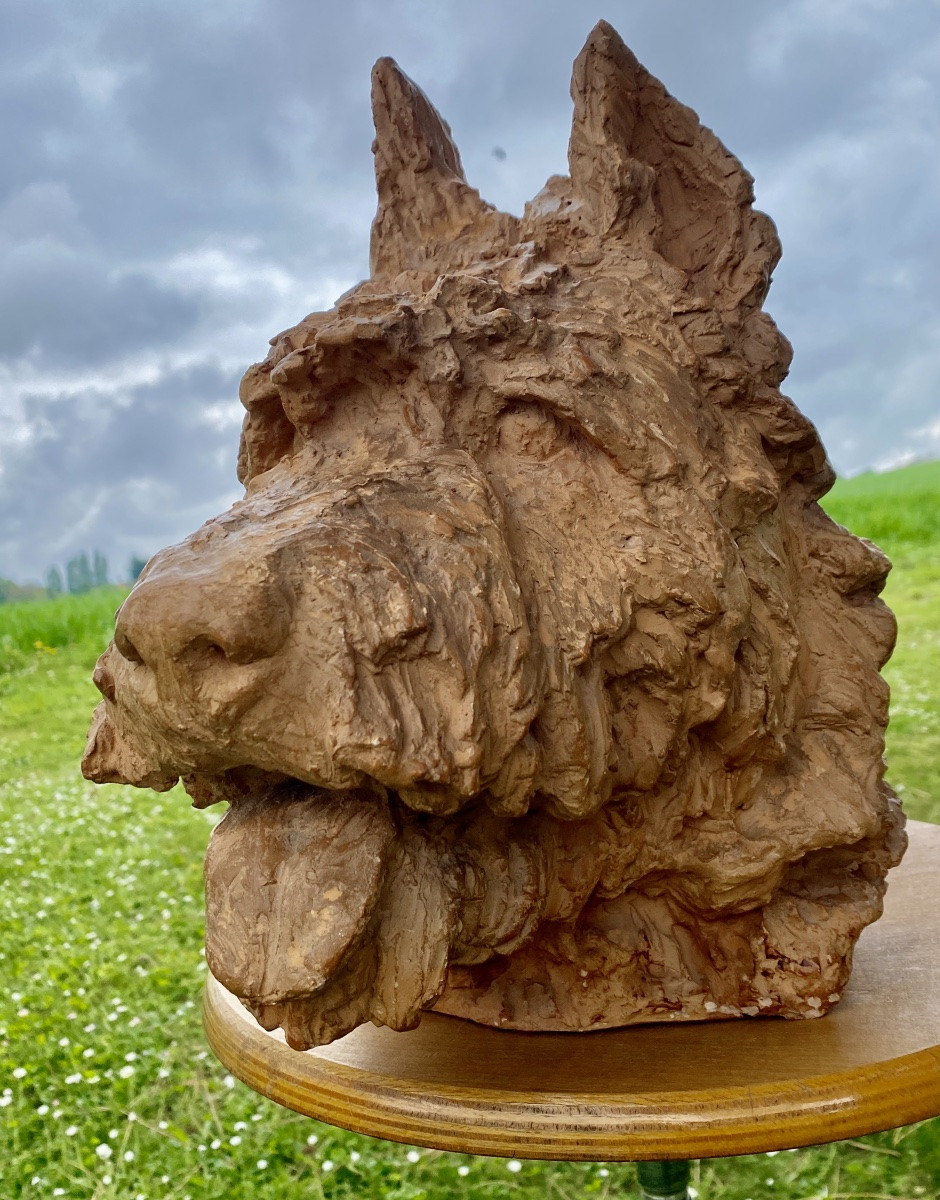













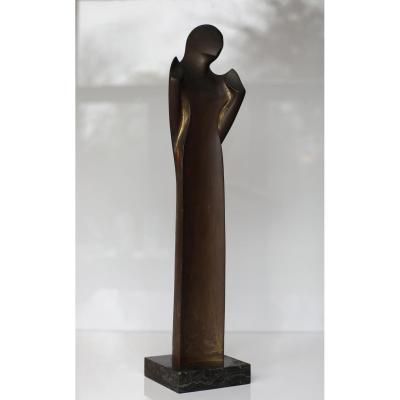


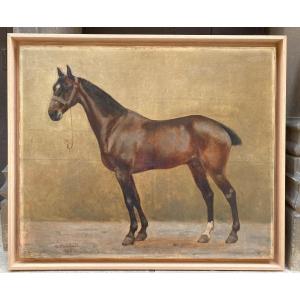













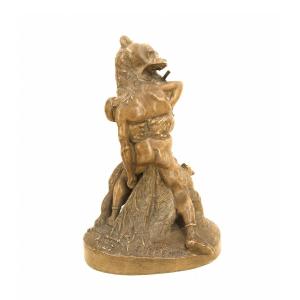

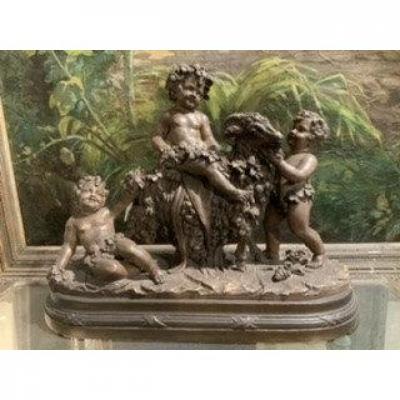



 Le Magazine de PROANTIC
Le Magazine de PROANTIC TRÉSORS Magazine
TRÉSORS Magazine Rivista Artiquariato
Rivista Artiquariato